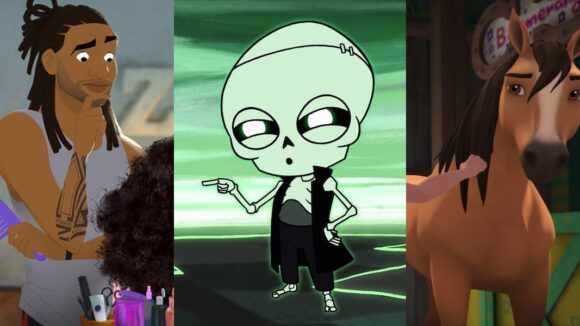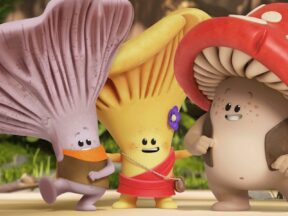

How To Get Your Short Made At A Major U.S. Studio: 5 Tips From Studio Executives
What makes for a good animated short in the U.S. studio system? How does a project get greenlit, and what can the studio do with it afterward?
This was the subject of a panel discussion at Kidscreen Summit’s recent virtual edition. The event brought together three executives — Carl Reed, Asalle Tanha, and David Wiebe — to discuss the production of shorts and their adaptation into long-form content, like series.
Reed is president of Lion Forge Animation, the studio behind Matthew Cherry’s Oscar-winning short Hair Love, released by Sony Pictures Animation, which is now being adapted into the HBO Max series Young Love. Tanha is director of development at Cartoon Network, where shorts often spawn series, Diego Molano’s Victor and Valentino being one example. Wiebe is svp, current series at Dreamworks Animation, which produces both standalone shorts and franchise spin-offs.
Below, we’ve summarized five tips given in the discussion. Of course, studios’ priorities and practices differ in many ways, so the relevance of the advice will vary from company to company.
- Creators: put your work on social media. Tanha scouts talent on Instagram: “You spend time online, looking at who artists you like follow, and who they follow, and you end up in a kind of rabbit hole of talent.” She also keeps an eye on comics and networks at film festivals.
- Artwork is key to the pitch, says Tanha. “When people pitch ideas, it’s usually some kind of pitch bible with art — art is really important. We do take pitches from writers, and in that case it’s helpful to have some kind of reference art. I would say no art is better than art that the creator’s not happy with.”
- The short’s title and thumbnail image are crucial, according to Wiebe. Youtube is the key platform for Dreamworks’ shorts, which tend to build on existing studio franchises, such as Spirit and Trolls. “Our audiences have billions of things to watch,” he says, “and it’s just on that lone image [that they] decide, ‘Do I want to click on this?’”
- When adapting a short, consider what made it popular. “You gain a fanbase early” with a hit short, says Reed. “You completely change everything [for the long-form adaptation], how do you think that audience is going to react? Sometimes they can be positive — you never know — but you already gambled a little bit with the short form. Let’s keep rolling the dice with the longer form? Or you can build on what works.”
- It’s about personalities, not just the project. When greenlighting shorts, Tanha says, her team asks itself, “[Is the creator] someone who is going to be able to run a show someday, who wants to run a show someday, and that we’re excited to have run a show someday?” Reed makes a similar point: there can be “personality issues” on the production of a short, which may affect its prospects of being adapted into a longer format.
Images at top, left to right: “Hair Love,” “Victor and Valentino,” “Spirit Riding Free” short

.png)
